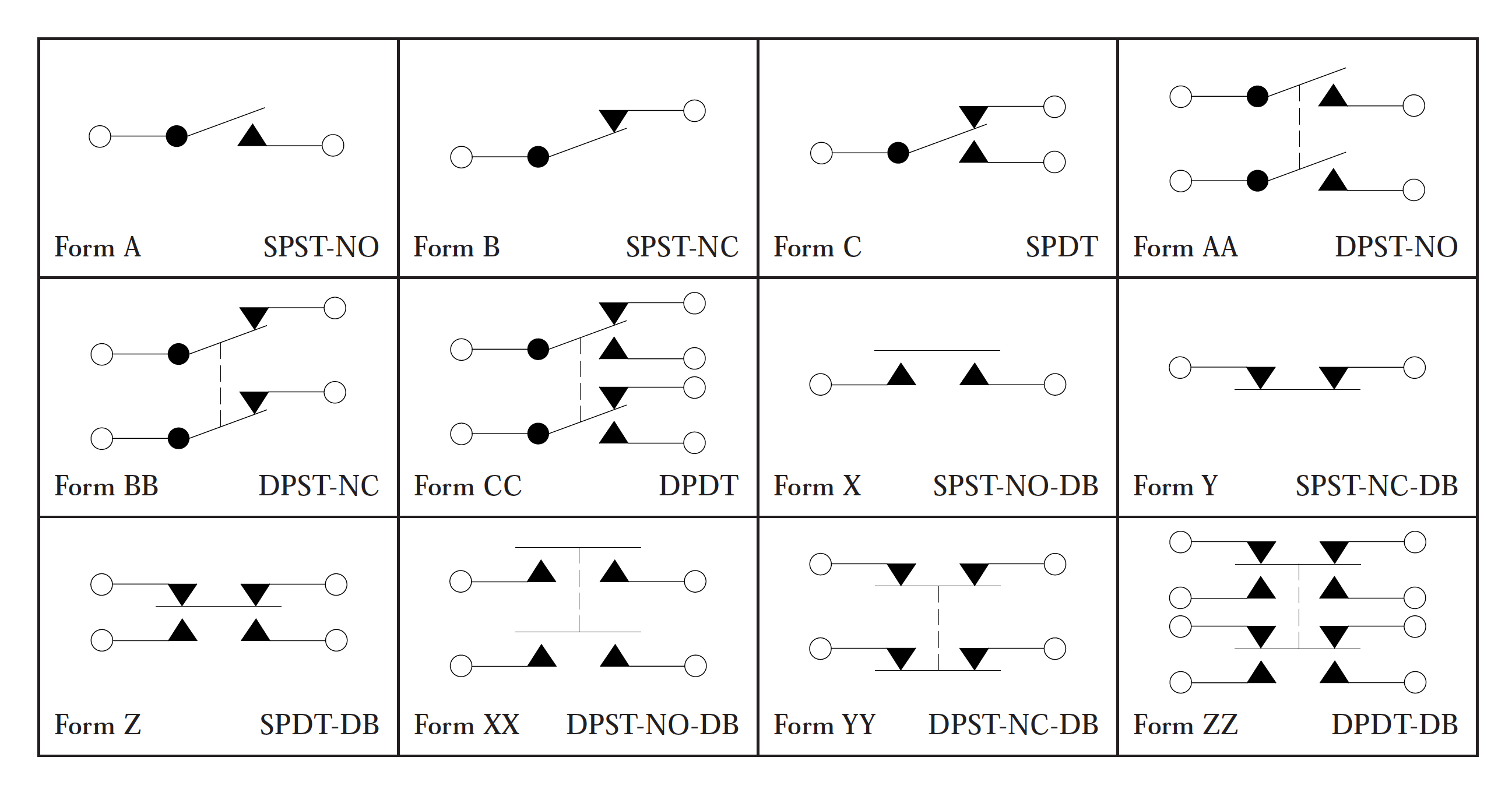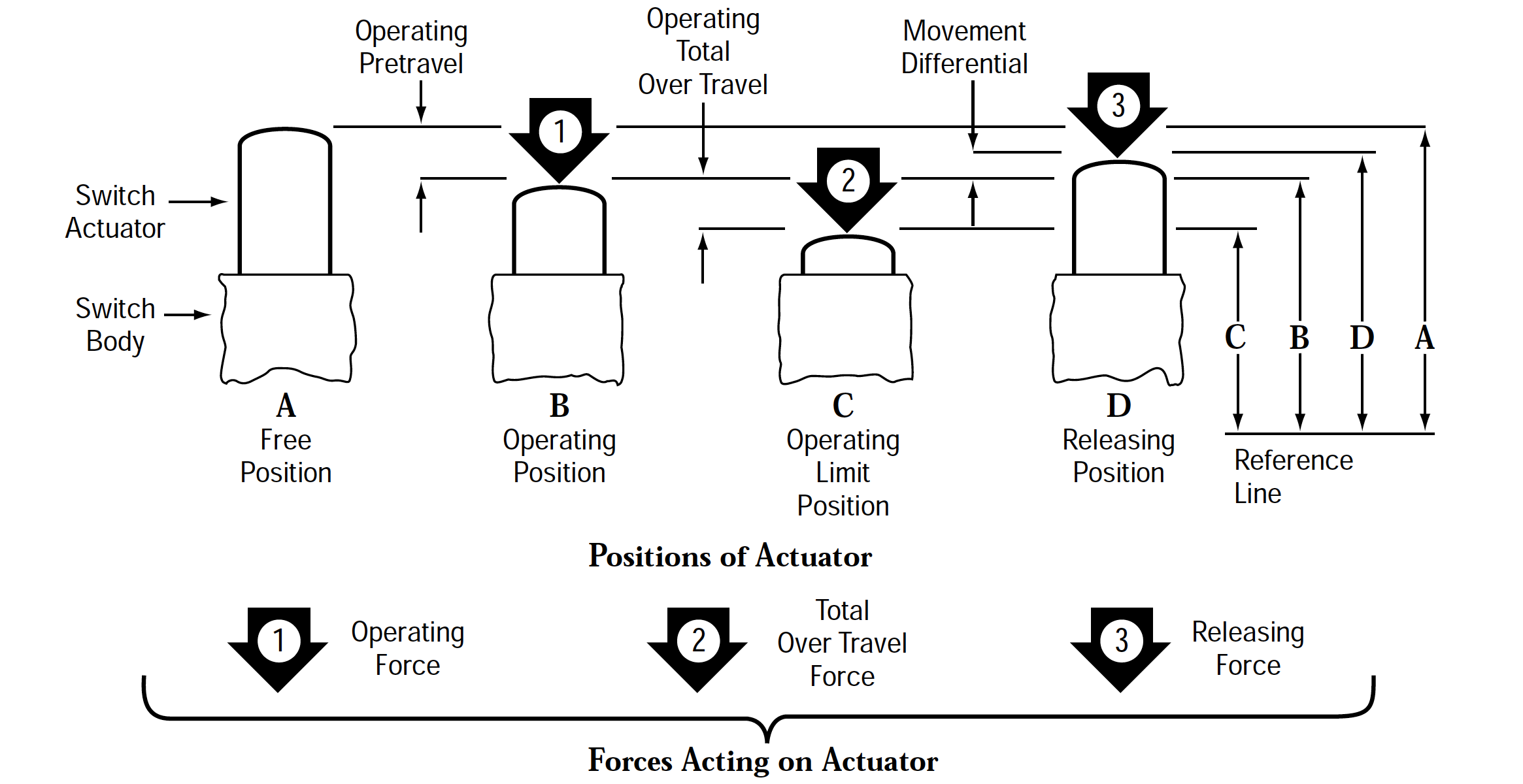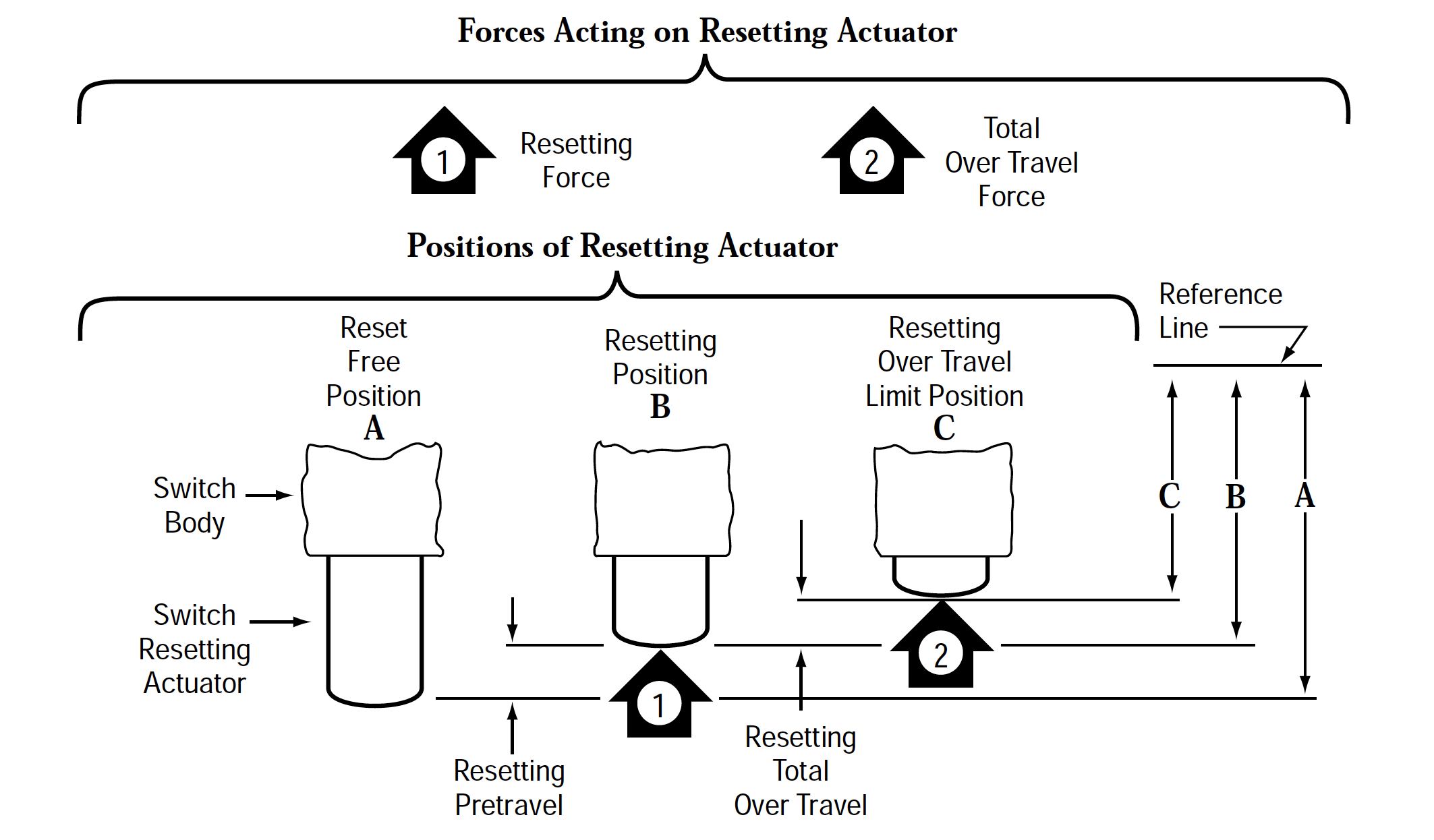

U.S.: 1-800-278-5666
ASIA: 886-3-5821124


Bounce
Rapid rebounding of contact after closing.
Break
An opening or interruption of a circuit. Simultaneous interruption of a circuit in two different places is described as a double break.
Break-Before-Make
With double throw contacts where the moving contact, in transferring, interrupts one circuit before establishing the other.
Chatter
Prolonged undesirable opening and closing of electronic contacts.
Clearance
Air space, between live metal parts of opposite polarity or to ground.
Contact Gap
The air space between mating contacts when contacts are open.
Corona
Discharge of electricity that appears on the surface of the conductor when the potential gradient exceeds a certain value.
Creepage
The distance over the surface of an insulator between live metal parts of opposite polarity or to ground. Usually 3/32" minimum.
Dielectric Strength
The property of an insulating material which determines the maximum potential gradient that the material can withstand without arc over.
Double Break
A contact arrangement in which the moving switch element bridges across two fixed contacts so that the circuit is broken in two places simultaneously. Sometimes called “shorting bar.”
Double Throw
A switch that alternately completes a circuit at each of its two extreme positions. It has both normally open and normally closed circuits.
Free Position
The position the switch button (or actuator) assumes when no force is exerted against it. Free position is dimensioned from the top of the switch button (or actuator) to the mounting hole centerline, top of switch panel or other specified reference.
Movement Differential
The button (or actuator) movement required between operating point to reset point.
Operating Force
The force required to depress the switch button (or actuator) to operating (or trip) position.
Operating Point (or Position)
The position of the switch button (or actuator) at which initial switch contact transfer takes place. Operating point is dimensioned from the top of the switch button (or actuator) to mounting hole centerline, top of switch panel or other specified reference point.
Over Travel
The continued switch button (or actuator) movement possible after initial contact transfer, without bottoming or damage to the switch mechanism.
Pretravel
The distance of button (or actuator) movement from free (rest) position to the operating position.
Reset Point (Releasing Position)
The point of actuation at which the second, or return contact transfer takes place. At this point the contacts snap back to their original position. Reset point is dimensioned from top of switch button (or actuator) to mounting hole centerline, top of switch panel or other specified reference point.
Reset Travel
The continued switch button (or actuator) movement back from reset point to free position.
Snap Action
The action of moving contact members that transfer from one position to another at a speed which is essentially independent of actuator speed.

